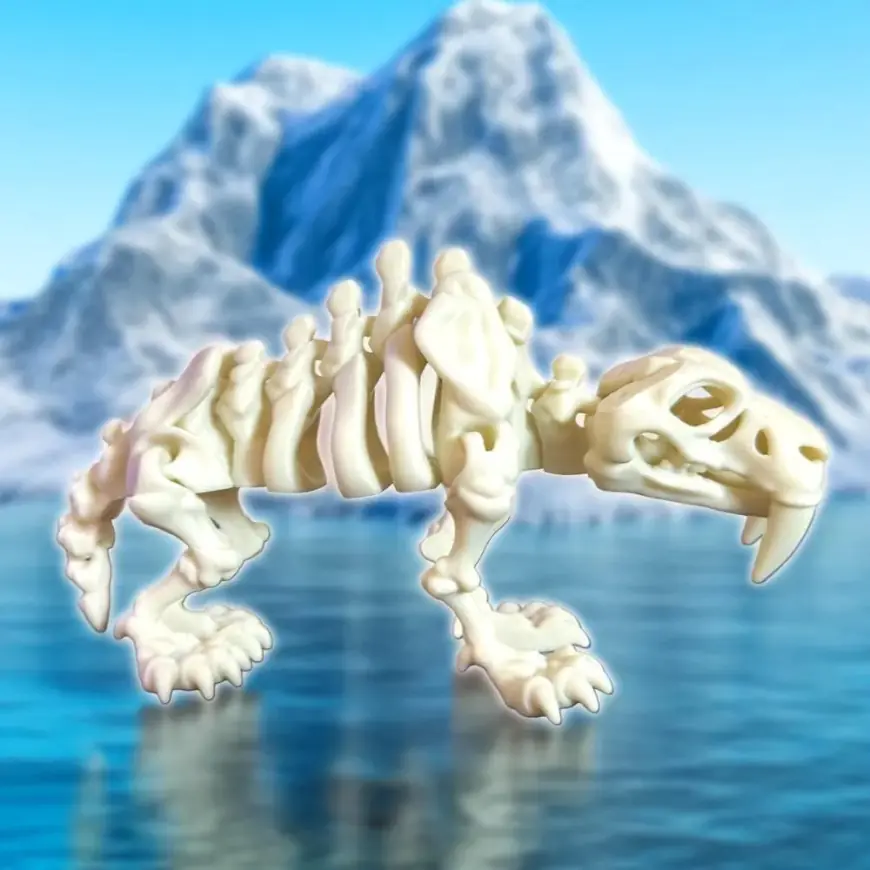Skeleton Toy Collectibles: Exploring the Fascinating Smilodon Fossil Toy
Discover the world of skeleton toys and the captivating smilodon fossil toy. Learn how these prehistoric models inspire learning, creativity, and collecting for kids and adults alike.

Skeleton toys have become more than just playthings—they are gateways into the worlds of science, paleontology, and imagination. Among the most intriguing of these is the smilodon fossil toy, a replica of the legendary saber-toothed cat that roamed the Ice Age. Whether for collectors, students, or curious kids, these models bring prehistoric creatures to life in a fun and educational way.
The Allure of the Skeleton Toy
A skeleton toy is more than just a model—it’s a miniature piece of history. These articulated figures allow you to see the intricate details of prehistoric anatomy, offering a deeper understanding of how creatures once moved and lived.
-
Educational Value: Teachers and parents often use skeleton toys to teach anatomy and paleontology.
-
Interactive Learning: Poseable designs encourage hands-on exploration.
-
Collectible Art: Many skeleton toys double as display pieces for enthusiasts.
For anyone passionate about ancient life, these toys are both engaging and informative.
Spotlight on the Smilodon Fossil Toy
The smilodon fossil toy captures the essence of one of the most iconic Ice Age predators—the saber-toothed tiger. With its distinctive long canines and muscular frame, the smilodon has fascinated paleontologists and collectors for decades.
What makes the smilodon fossil toy special?
-
Realistic Details: Many models are crafted to mimic fossilized remains.
-
Articulation: Poseable skeletons allow creative display and study.
-
Cultural Significance: The smilodon is not only a scientific icon but also a popular figure in pop culture, from museums to movies.
This toy bridges the gap between education and entertainment, making it a must-have for prehistoric enthusiasts.
Why Collect Skeleton Toys?
Collecting skeleton toys isn’t just a hobby—it’s a way to connect with the past. Each piece represents a species that once roamed the Earth, sparking curiosity and a sense of wonder.
-
Educational Collecting: Students can study anatomy through models.
-
Creative Displays: Skeleton toys make excellent paleo-inspired décor.
-
Personal Passion: Many collectors feel a personal connection to these creatures, making each piece meaningful.
The smilodon fossil toy in particular resonates with collectors because it represents power, mystery, and extinction—a reminder of nature’s ever-changing story.
Skeleton Toy for Kids and Adults
One of the best features of a skeleton toy is its universal appeal.
-
For Kids: It encourages imaginative play while sneaking in science lessons.
-
For Adults: It’s a piece of prehistoric art that sparks conversation and learning.
The flexibility and detail of these toys make them adaptable to both playrooms and display shelves.
Final Thoughts
From classrooms to collectors’ shelves, the skeleton toy continues to capture imaginations. The smilodon fossil toy, with its striking saber-toothed design, stands out as a fascinating way to connect with prehistoric life. Whether you’re a parent, teacher, student, or collector, these models offer a unique blend of education and creativity.
FAQs
1. What is a skeleton toy?
A skeleton toy is a model or replica of an animal’s skeleton, often designed to be poseable and educational.
2. What makes the smilodon fossil toy unique?
It represents the saber-toothed tiger, an Ice Age predator known for its massive canines and cultural significance.
3. Are skeleton toys good for education?
Yes, they help children and students understand anatomy, paleontology, and prehistoric life through hands-on learning.
4. Who collects smilodon fossil toys?
Collectors, educators, science enthusiasts, and anyone interested in prehistoric animals often add smilodon fossil toys to their collection.
5. Can skeleton toys be used as décor?
Absolutely! Many people display them as paleo-inspired art pieces in homes, offices, and classrooms.
What's Your Reaction?
 Like
0
Like
0
 Dislike
0
Dislike
0
 Love
0
Love
0
 Funny
0
Funny
0
 Angry
0
Angry
0
 Sad
0
Sad
0
 Wow
0
Wow
0


















































